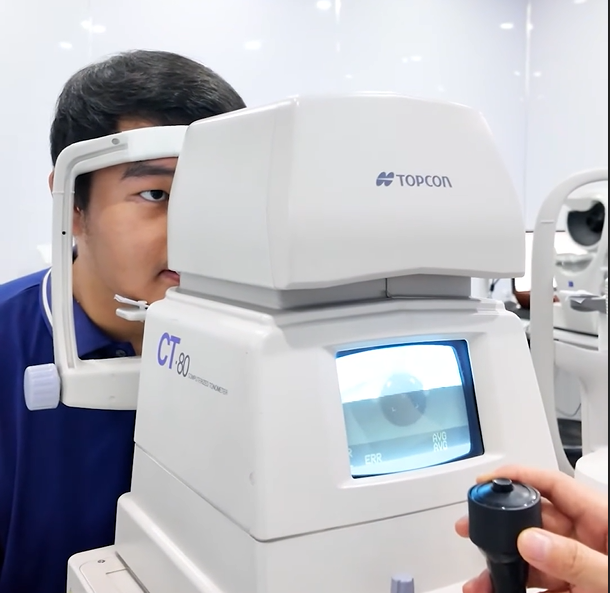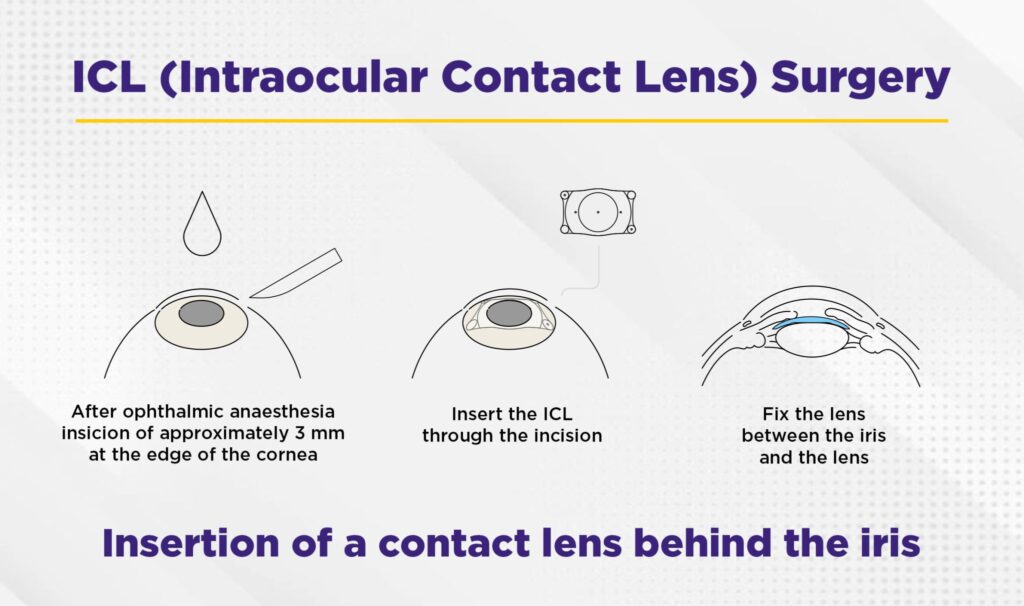Scientific & Technical Conference 2025: MSc–MD Nguyen Phu Tung reports one-year outcomes of Phakic ICL & IPCL surgery
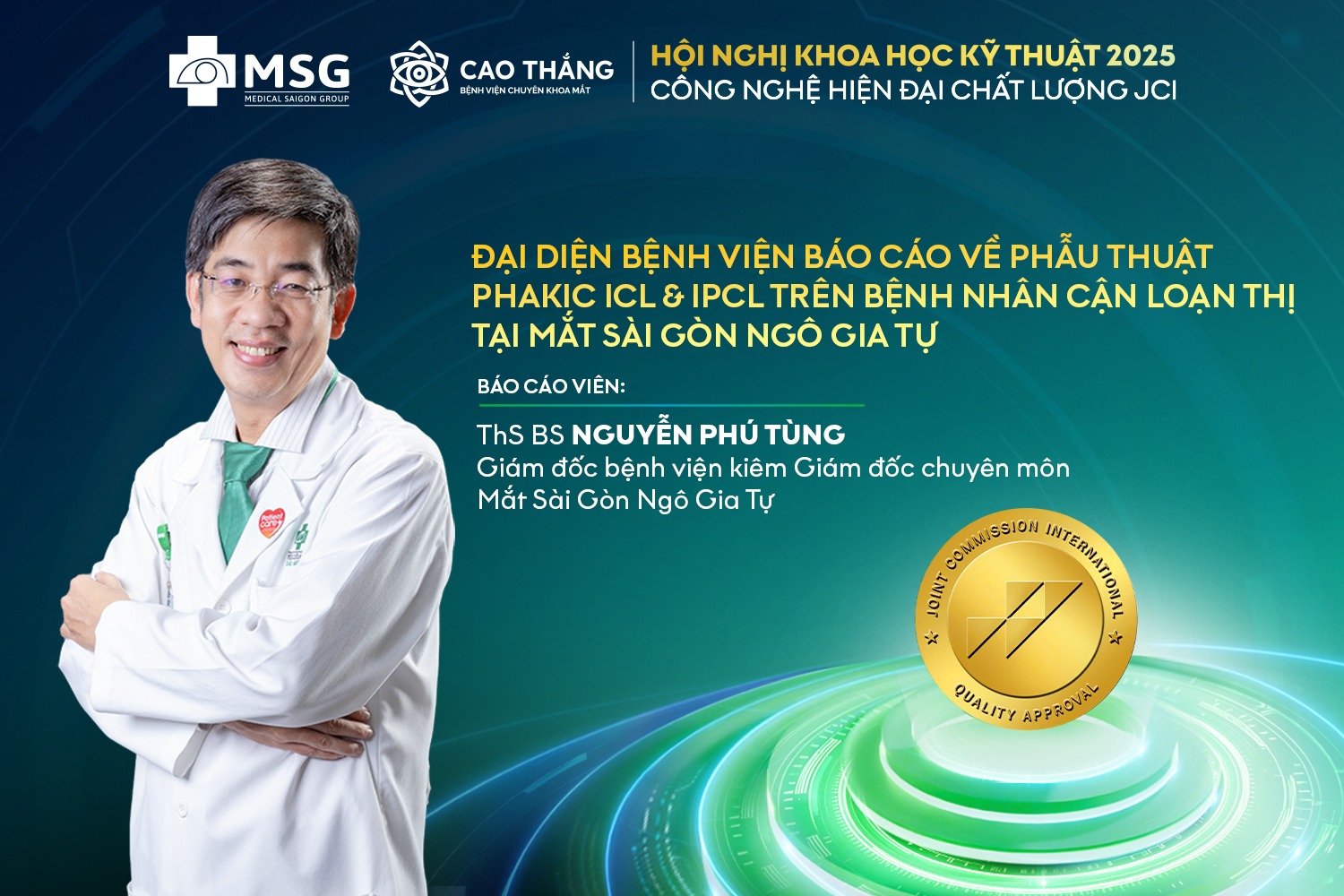
Professional report on Phakic ICL & IPCL at the 2025 Conference
Saigon Eye Hospital – Ngo Gia Tu is honored that MSc–MD Nguyen Phu Tung—Hospital Director and Medical Director—participated in and delivered a featured presentation at the 2025 Scientific & Technical Conference, focusing on a one-year evaluation following Phakic ICL and IPCL surgery in patients with myopia and astigmatism. The talk summarized clinical outcomes, patient satisfaction, and peri-operative safety over a 12-month follow-up period.
What are Phakic ICL & IPCL? Why they suit high myopia with astigmatism
Phakic ICL (Implantable Collamer Lens) and IPCL (Implantable Phakic Contact Lens) are intraocular lenses placed behind the iris and in front of the natural crystalline lens to correct moderate-to-high refractive errors. Unlike corneal laser reshaping techniques, these approaches do not injure the cornea, preserving corneal structure and tear-film quality. This makes them especially suitable for individuals with thin corneas, persistent dry eye, or those who are not ideal candidates for LASIK/PRK due to anatomical or ocular-surface constraints. Both technologies aim to deliver clear, natural vision with quick functional recovery, while remaining removable if needed (for example, if refraction changes over time or a different strategy is considered in the future). By preserving corneal biomechanics, many patients report crisp distance vision and improved night-time quality of sight once the lens is properly centered and the axis is aligned in toric cases.
In daily practice, candidacy assessment considers age, refractive stability, anterior chamber depth, and endothelial cell density. When these parameters are within safe ranges, phakic lenses can offer a reversible, tissue-sparing solution for high myopia and compound astigmatism.
Who is a good candidate?
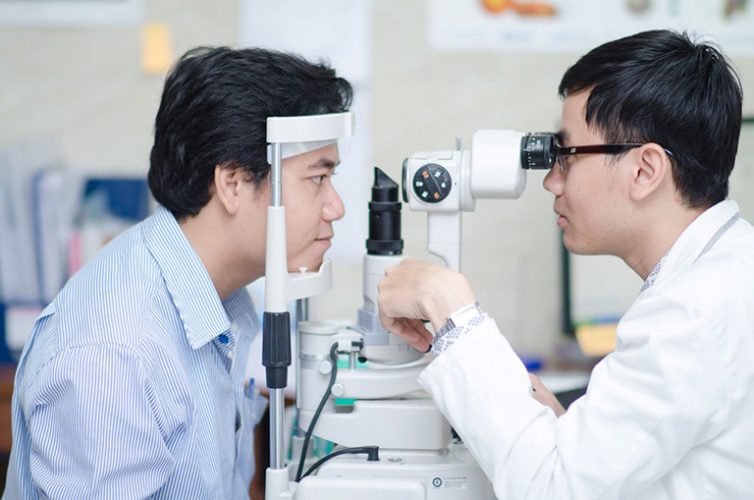
Pre-operative vision testing prior to Phakic ICL refractive surgery
- Myopia typically from about –3.0D to –20.0D; astigmatism commonly around ~1.0D–4.0D (based on clinical evaluation and ocular dimensions).
- Adults with stable refraction for ≥ 1 year and predictable optical needs.
- Thin corneas, significant dry eye, or those deemed unsuitable for corneal laser procedures.
- Anterior chamber depth and corneal endothelial cell density that meet safety thresholds.
Final eligibility is individualized. Comprehensive diagnostics—refraction, corneal tomography, biometry, and endothelial microscopy—help determine whether Phakic ICL or IPCL is the safer and more effective route.
Key benefits
- Sharp, natural vision: many eyes achieve unaided visual acuity (UCVA) equal to or better than best-corrected vision (BCVA) before surgery.
- Fast functional recovery: most patients resume light activities after 24–48 hours, with continued refinement over subsequent weeks.
- Minimal impact on dry eye: the corneal surface is not ablated, helping maintain corneal nerves and tear-film stability.
- Removability: the lens can be taken out or exchanged if clinical needs evolve.
- UV filtering: Collamer/IPCL materials help attenuate ultraviolet light, contributing to intraocular protection.
Together, these features provide a tissue-sparing pathway to spectacle independence especially valued by patients with high prescriptions or corneas that are biomechanically marginal for laser surgery.
Highlights from the report: One-year outcomes at Saigon Eye Hospital – Ngo Gia Tu
The presentation by MSc–MD Nguyen Phu Tung documented consistently favorable results over a one-year follow-up in a cohort of myopic–astigmatic patients:
- Unaided visual acuity (UCVA): the majority of patients achieved vision comparable to or better than their pre-operative spectacle-corrected levels. Distance clarity and night-time quality improved when indications and toric alignment were appropriately selected.
- Refractive stability: spherical equivalent and cylindrical components remained stable during the 12-month period, with no meaningful trend toward regression in the reported series.
- Safety profile: no serious adverse events were recorded; mild halos or night-glare tended to diminish with neuroadaptation and precise vault/centering. Intraocular pressure and lens positioning were well controlled at scheduled follow-ups.
- Patient satisfaction: high satisfaction rates were attributed to rapid recovery, natural visual quality, and a smooth return to work and study routines.
These outcomes reinforce the role of Phakic ICL/IPCL in complex refractive scenarios and reflect the team’s commitment to ongoing quality improvement and evidence-based care at Saigon Eye Hospital – Ngo Gia Tu.
Quick comparison: Phakic ICL/IPCL vs. LASIK/PRK
| Criterion | Phakic ICL/IPCL | LASIK/PRK |
|---|---|---|
| Effect on the cornea | Does not injure corneal tissue | Reshapes or removes corneal tissue |
| Dry-eye risk | Lower (corneal nerves preserved) | Higher due to corneal nerve alteration |
| Suitability for thin corneas | Yes (often preferred) | Often not suitable |
| Future adjustability | Lens can be removed/exchanged | Removed tissue cannot be restored |
| Recovery time | Fast (typically 1–2 days) | About 1–2 weeks depending on response |
The optimal pathway depends on ocular anatomy, lifestyle, occupation, and visual expectations. A tailored consultation aligns technology choice with patient-specific priorities.
Surgical pathway & follow-up at Saigon Eye Hospital – Ngo Gia Tu
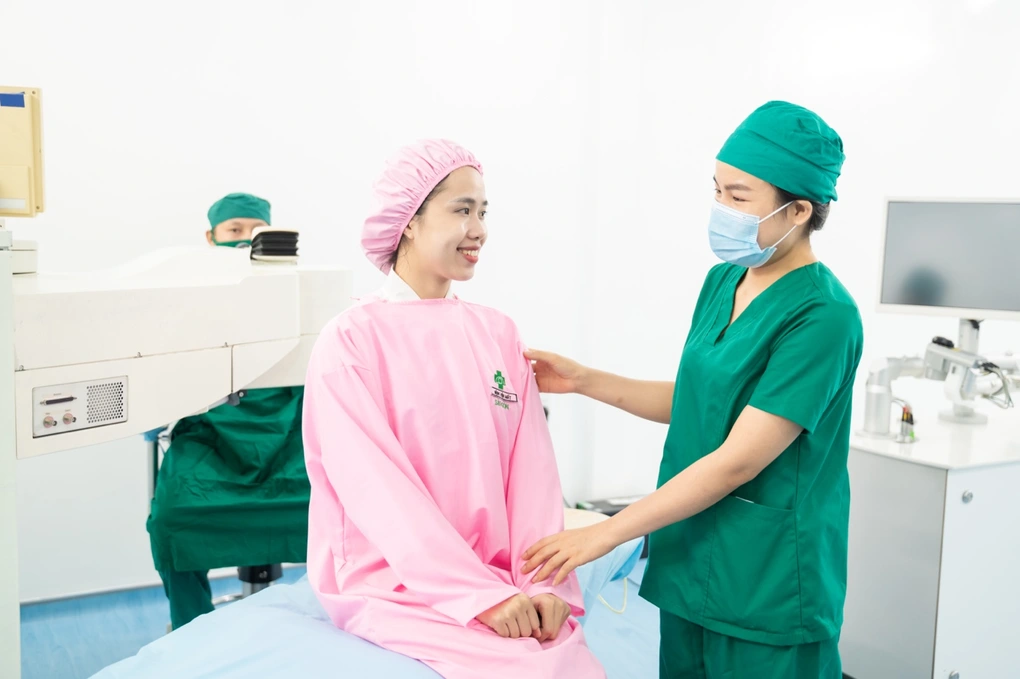
Professional surgical workflow and follow-up at Saigon Eye Hospital – Ngo Gia Tu
- In-depth assessment: refraction, corneal mapping, anterior chamber depth, endothelial cell count, and overall ocular health to exclude contraindications and set realistic goals.
- Preparation: counseling to select ICL (including toric options) or IPCL; dilation and topical anesthesia before lens insertion.
- Lens implantation: a micro-incision at the corneal periphery, delivery of the lens behind the iris, and careful axis alignment in astigmatic cases to maximize optical performance.
- Completion & monitoring: confirmation of lens position and intraocular pressure; detailed post-operative guidance and a structured follow-up schedule.
Most patients go home the same day, resume light activity within 24–48 hours, and attend all check-ups to ensure long-term safety and stable visual outcomes.
Post-operative care: Four practical reminders
- Eye drops as prescribed: use antibiotic/anti-inflammatory drops exactly as directed; do not discontinue early.
- Mechanical protection: avoid eye rubbing for 1–2 weeks; consider protective eyewear outdoors or during exercise.
- Hygiene & routine: keep unclean water out of the eyes for the first few days; temporarily pause swimming/diving/contact sports per medical advice.
- Follow-up schedule: monitor intraocular pressure, endothelial status, lens vault/centring, and overall visual quality.
Adhering to these steps supports smooth recovery, reduces transient visual phenomena, and helps safeguard corneal health over time.
Quality commitment from Saigon Eye Hospital – Ngo Gia Tu
The participation of MSc–MD Nguyen Phu Tung at the 2025 Scientific & Technical Conference underscores the hospital’s dedication to continuous learning, protocol standardization, and treatment effectiveness. As part of the Saigon Eye Hospital System, the Ngo Gia Tu facility leverages system-wide experience and invests in modern technology to optimize the patient journey for safe, contemporary refractive care.
If you are considering Phakic ICL/IPCL refractive surgery, schedule a comprehensive evaluation to assess ocular structure, discuss goals, and personalize your treatment plan with our experienced team.

 vi
vi 22-Sep-2025
22-Sep-2025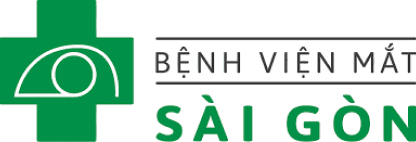
.svg) Hotline
Hotline Appointment
Appointment https://matsaigonngogiatu.com/
https://matsaigonngogiatu.com/ 355–365 Ngô Gia Tự, P.2, Q.10, Ho Chi Minh City
355–365 Ngô Gia Tự, P.2, Q.10, Ho Chi Minh City Opening Hours
Opening Hours
